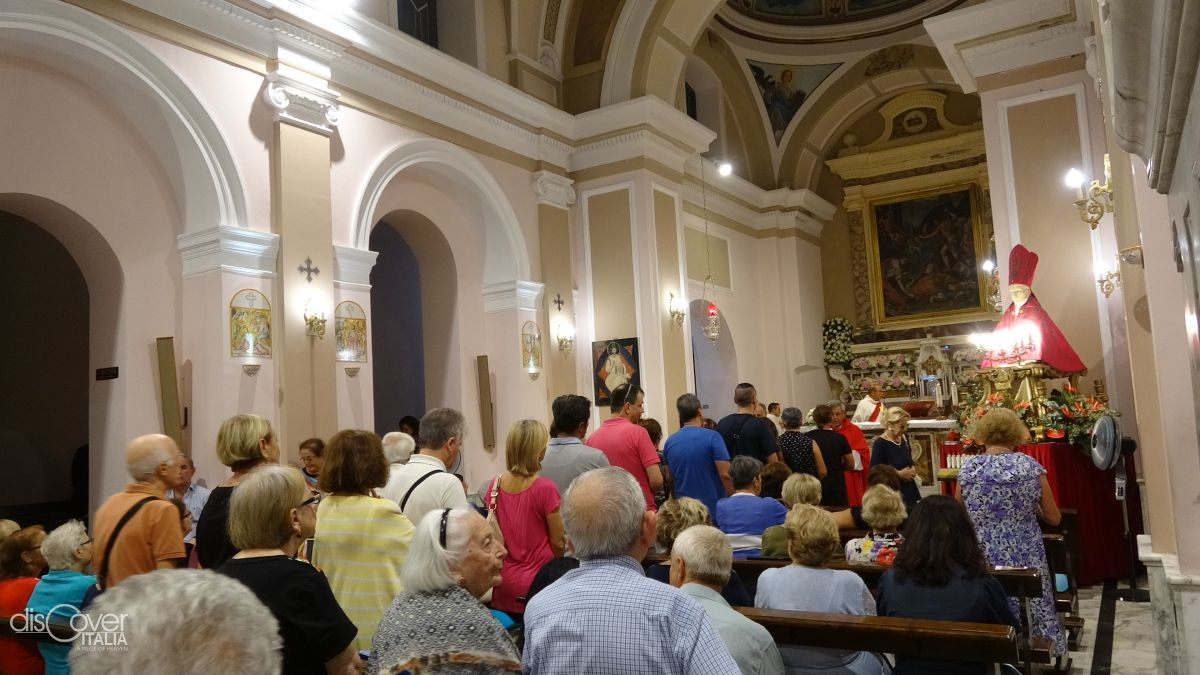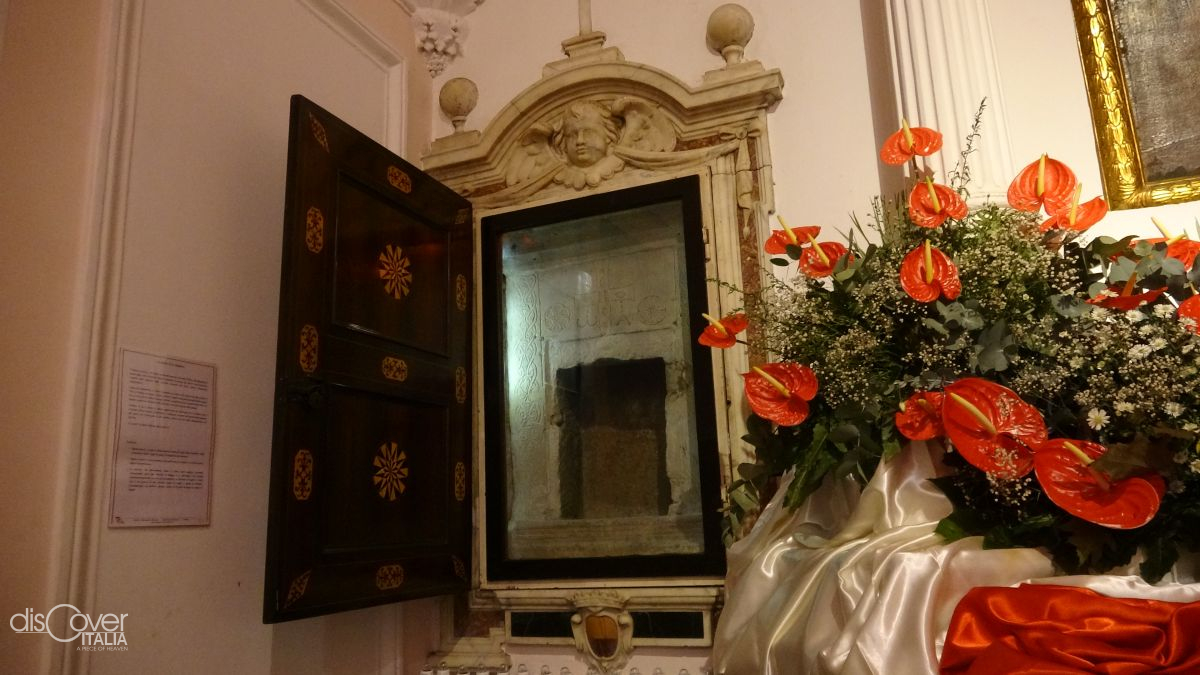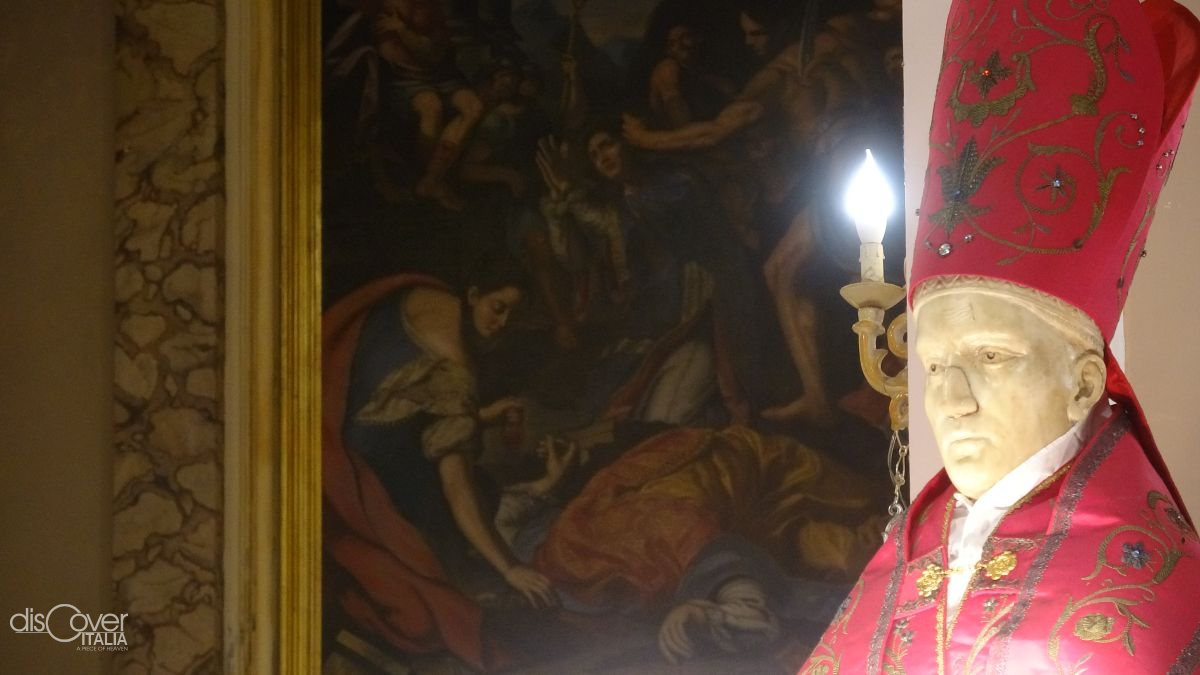It has been in the heart of the Neapolitans for centuries. In that place on the ancient Via Domitiana, in the stretch that leads from Pozzuoli to Agnano, the story tells of the last moments in the life of San Gennaro, the beloved patron saint of the city of Partenope.
It was there, a short distance from the Solfatara where the Romans placed the Forum Vulcani, or the home of Vulcan, that the Bishop of Benevento was beheaded on 19 September 305, at the time of the emperor Diocletian.
Procolo, Festo and Desiderio and three other faithful, who had accompanied him on his visit to Pozzuoli, were also martyred with him. All suffered imprisonment and the death sentence at the behest of the governor Dragonzio, persecutor of Christians. And already in the immediacy of that event, among the Christians who took care to bury the martyrs in safe places and to keep some ampoules of their blood, there was a desire to pass on their memory over time. Thus, in the eighth century a small church dedicated to San Gennaro was erected around the stone on which, according to tradition, he was said to have been beheaded.
The troubled geological events of the Phlegrean area caused damage on several occasions to the church where the cult of Gennaro and his martyrdom companions was kept and kept alive. And in 1198 the eruption of the Solfatara represented a very hard blow, even if the altar was saved with the stone of martyrdom. Around that historical testimony, which attracted an ever increasing number of faithful, a new church was designed and built in the 16th century.
The land belonged to the canons of the cathedral of Pozzuoli, but the city of Naples wanted to bear the expense of the new temple. And in fact, even today, although located in the territory of Pozzuoli, the structure is owned by the Neapolitan municipality.
The works, which began in 1574, ended in 1580. The new church, located 120 meters above sea level and overlooking a magnificent panorama of the Gulf of Pozzuoli, was immediately flanked by a convent of about twenty cells, which welcomed the Friars Minor Capuchins, in charge of taking care of the cult. The new religious complex soon became a reference point for pilgrims from Naples and all parts of Campania, so much so that it was elevated to a sanctuary in honor of San Gennaro. And the cessation of the continuous earthquakes that had previously scourged that territory was also attributed to its existence.
The large turnout made a new expansion necessary between 1701 and 1708, designed by the architect Ferdinando Sanfelice, who also took charge of a restructuring according to the prevailing Baroque taste. But even that was not to be the definitive arrangement for the sanctuary. The building was put at risk again by a devastating fire which developed between 21 and 22 February 1860, which ruined a large part of it. Therefore, a reconstruction was necessary. The project was signed by the architect Ignazio Rispoli and was also built with contributions from the population of Pozzuoli, grateful to the Saint for having stopped the cholera epidemic that broke out in 1866.


The Miracle Stone
It has been a cult object since ancient times, identified immediately and also when the first sacred building was erected like the stone on which San Gennaro was beheaded. The traces of the martyr's blood are identified in the black marks that can be identified. In the days leading up to the anniversary of the death, on September 19, those signs take on an increasingly red colour. The most recent studies have postponed the dating of the stone, part of an early Christian altar, by two centuries and denied the presence of blood.
The prodigious bust
There is a yellowish spot on the neck of the ancient bust of the Saint. According to tradition, it appeared on a special occasion, in 1656, the year of the plague which decimated the population of Pozzuoli. Precisely to defeat the plague, the faithful of Puteolan asked for the intercession of the Saint. His bust was carried in procession from the Solfatara to the Flavian amphitheatre. During the journey, that spot was noticed which gradually swelled, until it became a bubo which finally burst, with a great smell of burning, a sign that the Saint had taken on the disease, freeing Pozzuoli and its people.
A legend then tells that during a raid by the Saracens, the nose of the statue was cut off with a blow of the scimitar. Several sculptors were called to restore it, but none of the noses shaped for replacement could be attached to the marble face. It then happened that one day some fishermen found a strange piece of marble in the net, which was repeatedly thrown into the sea and fished out again. One of the fishermen had the inspiration to bring the piece of marble to the church of San Gennaro and it was then that the stone flew and stuck to his face returning to its place.
On 11 February 1945, the sanctuary was elevated to a parish in honor of San Gennaro and Saints Festo and Desiderio and its care was entrusted to the Capuchin Fathers.




Comments powered by CComment